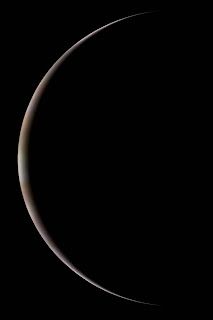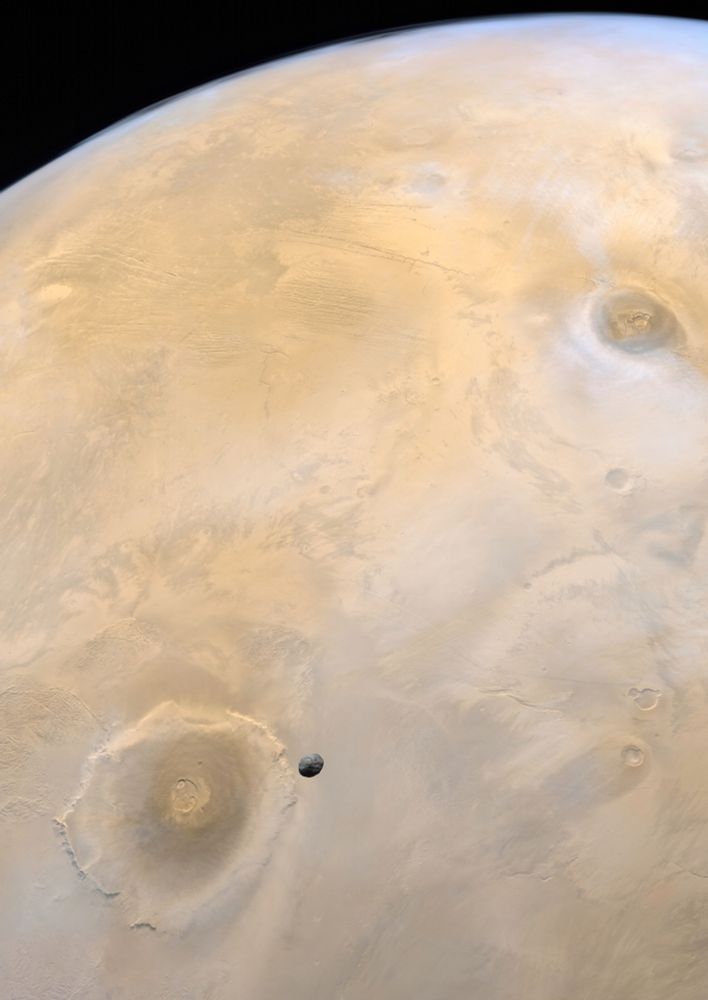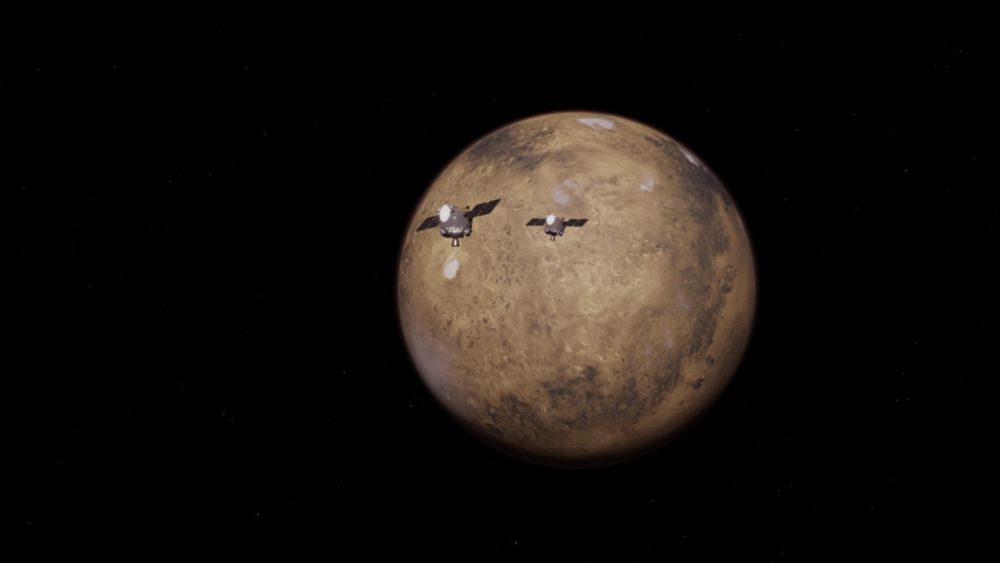No, Thiel is. He's just less visible.
12.12.2025 18:10 — 👍 2 🔁 0 💬 2 📌 0
That would actually be funny. But this is just creepy.
11.12.2025 00:55 — 👍 2 🔁 0 💬 0 📌 0

A crescent Jupiter from the Galileo orbiter

Io, moon of Jupiter, from the Galileo Orbiter

The rings of Jupiter and Europa, moon of Jupiter, from the Galileo orbiter. In this view, Europa is eclipsed by the planet Jupiter, which is why it is so dim relative to the rings.

Callisto, moon of Jupiter from the Galileo orbiter.
Today in 1989, the Space Shuttle Atlantis launched the Galileo spacecraft, the first orbiter and entry probe at a giant planet. When I watch it recede from the shuttle, I can't help but want to scream to open the antenna first (it never opened). They were still able to salvage an amazing mission.
08.12.2025 03:42 — 👍 50 🔁 16 💬 1 📌 1
So you're not just wrong but also impaired.
05.12.2025 16:10 — 👍 0 🔁 0 💬 0 📌 0
LOL, yes, because Norway has no other source of oil 🧐
02.12.2025 00:32 — 👍 16 🔁 0 💬 0 📌 0

A high-resolution color image of Mars with the small, dark, potato shaped satellite Phobos, seen in sharp contrast as it passes over the massive volcano Olympus Mons. Phobos appears irregular and shadowed against the softly rust colored Martian surface. In the distance, two other volcanic features Ascraeus Mons (upper right) and the flatter Alba Mons (upper left) are visible. Wisps of light clouds and the blackness of space frame the planet’s curved horizon.
1/n 🧵
Just released: NEW images of Phobos over Mars by @esa.int Mars Express 🔭🧪
This view shows Phobos above Olympus Mons!
Full-size (130MP) image & details: flic.kr/p/2rggHKy
Credit: ESA/DLR/FU Berlin/Andrea Luck CC BY
Captured on May 14, 2025 | Image ID: HQ967
Raw data from: psa.esa.int
12.07.2025 20:32 — 👍 675 🔁 227 💬 12 📌 21

The image is divided into four sections, each showing one of the gas giants against a black background.
Top left: Jupiter. It appears as a large, round sphere with horizontal bands in shades of brown, tan, and white. A bright white oval storm sits on the lower right side. A faint ring is visible alongside Europa, one of its satellites, which appears very bright with a star-shaped artifact.
Top right: Saturn. It has a pale beige surface with soft horizontal shading. Surrounding it is a wide, bright ring system tilted diagonally. The rings look thin and sharply defined, with multiple subtle bands of light and dark.
Bottom left: Uranus. It appears as a smooth blue-green sphere with some whitish circular clouds around the pole that is facing the observer. Surrounding it is a bright circular ring system made up of thin white lines. The rings form a bright, symmetrical halo around the planet.
Bottom right: Neptune. It is a blue sphere with slightly brighter and darker circular features on its atmosphere. It also has a thin ring system, dimmer and less defined than Uranus’s in this image, appearing as a faint double oval around the planet.
Each planet has its name printed below it in white capital letters.
3/3
Time to update the Gas Giant Portrait I created, now including the new versions of Saturn and Uranus I recently processed.
Full size & more info: flic.kr/p/2oUkYSY 🔭🧪
Credit: NASA/ESA/CSA/STScI/AndreaLuck
Jupiter is next on the list to be updated :)
29.11.2025 13:03 — 👍 106 🔁 43 💬 3 📌 4
Introduce yourself with five concerts you've seen:
Bob Dylan (x13)
REM
Counting Crows
Soul Asylum
Willie Nelson
28.11.2025 01:39 — 👍 2 🔁 0 💬 1 📌 0

Two images of Io acquired by SHARK-VIS camera on the Large Binocular Telescope. Left image shows the trailing hemisphere, including the red ring around Pele. Several dark splotches visible from ash fall deposits from Pele and Babbar. The right image shows the anti-Jovian hemisphere with Prometheus in the middle.
@spacemarschall.net if going with an image from that paper, I would suggest our “true” color reconstructions. Very approximate true color, SHARK-VIS in February didn’t have a proper blue filter but a general purpose “visible” filter. Hopefully to be remedied in time for the next Jupiter oppo
27.11.2025 14:25 — 👍 11 🔁 1 💬 1 📌 0
Introduce yourself with four spaceships.
26.11.2025 00:19 — 👍 8 🔁 0 💬 0 📌 2

Download full size image here: www.flickr.com/photos/192271236@N03/54375128834/sizes/o/ (See licence below)
Credit: ESA/DLR/FUBerlin/AndreaLuck CC BY
Check out the original with the martian background distorted here: flic.kr/p/2ogpjSY. The camera scanning the satellite caused the original view of the Martian surface to appear stretched as it moved by.
Colourised image created using data processed from archives.esac.esa.int/psa
Mission: ESA Mars Express
Orbit 22608
Instrument: HRSC
Time: 2021-11-22 22:51
Product IDs:
HM608_0000_BL3
HM608_0000_ND3
Notes: Colourised image created using data processed from: psa.esa.int. This is a single shot on HM608_0000_BL3, not a composite image, although the background has been resized to reduce distortion (see above original) and the details on Phobos are merged with the second filter HM608_0000_ND3, shot during the same observation.
Credit: ESA/DLR/FUBerlin/AndreaLuck CC BY
Feel free to share, giving the appropriate credit and providing a link to the original image or tweet creativecommons.org/licenses/by/3.0/
Phobos over Mars - ESA Mars Express - From Andrea Luck (andrealuck.bsky.social) - https://flic.kr/p/2qQWKph
23.11.2025 21:00 — 👍 107 🔁 20 💬 2 📌 0
Alternately, "NormalPerson," AKA Sergei, is normal guy heading back to his St. Petersburg apartment after another day of work at the troll farm.
18.11.2025 00:48 — 👍 2 🔁 0 💬 1 📌 0
HiRISE isn’t just amazing for capturing the Martian surface, here’s Jupiter seen from Mars as we wait for the release of data on interstellar comet 3I/ATLAS
Full size image & info flic.kr/p/2rFJT4F
Credit NASA/JPL-Caltech/UArizona/AndreaLuck CC BY
Mars Reconnaissance Orbiter
2007-01-11 RED,IR,BG
16.11.2025 11:48 — 👍 87 🔁 21 💬 4 📌 2

ESCAPADE will first travel to the Lagrange point beyond Earth's orbit, then a trans-injection burn will take it swinging by Earth and then inserting into orbit around Mars. Credit: Space Sciences Laboratory / University of California, Berkeley
NASA's just-launched ESCAPADE mission is trying out a novel trajectory to Mars, one that's slower but allows much more flexible launch dates. The flight path also provides a bonus science session at the L2 equilibrium point near Earth. 🧪🔭
skyandtelescope.org/astronomy-ne...
14.11.2025 16:46 — 👍 60 🔁 18 💬 2 📌 1

The image of Comet ATLAS comes from the sigma-clipping combination of 15, 60-second unfiltered exposures, remotely taken with the Celestron C14+Paramount ME+SBIG ST-10XME robotic unit available as part of the Virtual Telescope Project in Manciano, Italy. To keep the highest detail, we shortened the exposure time and, looking at the results, we are happy with that choice.
Interstellar Comet 3I/ATLAS is fragmenting on its way back out from the Sun. 🧪🔭
www.virtualtelescope.eu/2025/11/13/c...
13.11.2025 21:21 — 👍 125 🔁 37 💬 12 📌 5
Avi Loeb's calculations about 3I/ATLAS are 100% wrong because he has never understood that dust in the tail(s) responds to solar radiation pressure. Solar wind shapes the ion tail. But the radiation pressure is about 1000 times larger than the solar wind ram pressure, for particles that feel it.
13.11.2025 21:36 — 👍 161 🔁 30 💬 10 📌 11
My view is this: I think the deal stinks. Now, if it passes and they successful protect ACA subsidies in December, then I'll gladly admit I was wrong. If they don't, then I think that there is not real point in supporting except for trying to replace it from the inside. They're just a useful foil.
10.11.2025 11:50 — 👍 4 🔁 0 💬 0 📌 0

This view of Enceladus shows craters, some with modified shapes from later activity, plus a finger of a smooth region to the left.
The north polar region of Enceladus from Voyager 2 on August 25, 1981. Voyager 2 was unlucky enough to get its best views of the least active parts of this moon.
06.11.2025 12:01 — 👍 10 🔁 0 💬 0 📌 0
Tianwen-1 Mars orbiter successfully observed the interstellar object 3I/ATLAS in early October at a distance of ~29 million km, CNSA has just announced. www.cnsa.gov.cn/n6758823/n67...
06.11.2025 00:42 — 👍 103 🔁 30 💬 0 📌 7

All sorts of fractures can be seen on the icy surface of Europa.
Europa, moon of Jupiter, from the Galileo orbiter on November 25th, 1999.
05.11.2025 00:54 — 👍 8 🔁 0 💬 0 📌 0
Baseball has made it to November 2nd.
02.11.2025 04:02 — 👍 10 🔁 1 💬 0 📌 0
Would he have considered Cool Ranch Doritos part of the aesthetic stage?
02.11.2025 03:23 — 👍 0 🔁 0 💬 0 📌 0

A large eddy can be seen to the upper right.
Another closeup of Saturn from Voyager 2 on August 21, 1981. This one shows a closer view of one of an eddy.
01.11.2025 23:34 — 👍 15 🔁 3 💬 0 📌 0
LOL, I was thinking Voyager 2. But I accidentally wrote Voyager 1. An edit feature would be nice.
01.11.2025 22:53 — 👍 13 🔁 1 💬 0 📌 0
Doh! Brain fart on my part.
01.11.2025 22:52 — 👍 0 🔁 0 💬 0 📌 0

The clouds of Saturn. Several eddys can be seen.
The clouds of Saturn on August 21, 1981, from Voyager 1
01.11.2025 16:42 — 👍 24 🔁 7 💬 1 📌 1
If she has a nice couch at home, definitely. If not, nothing to worry about.
31.10.2025 20:33 — 👍 0 🔁 0 💬 0 📌 0
personal blog
Founder of Areo Info LLC https://areo.info
Geologist with a passion for impact cratering, planetary science and lunar exploration. Amateur astronomer, lover of atmospheric optics and history of science.
Also a part-time geologist of the Impact Crater Lake Lappajärvi UNESCO Global Geopark, Finland.
Library & information scientist in a world at war against libraries, information, & science. Free people read freely. History is for everyone.
Hello👍Bluesky
happy to be here!
🐙🐙🐙🐙🪨🪨🪨
FYI👋I zombied IG👎
Space. Engineering. Science. Mechanical engineering in the aerospace sector.
Moralistic garbage. Currently clean on OPSEC. Hiding behind "due process"
dasvitek.substack.com
Professor of astrophysics / planetary science / meteoritics at Arizona State University.
Photos from the Buran program
Online archive at buranarchive.space
#StandWithUkraine
by @buran.space
Astronomer, husband, father, staff of cats, sometime trombonist
Keeping you posted on space science activities from the European Space Agency.
Web: http://www.esa.int/science
Privacy Notice: esa.int/connectwithus
#astronomy #space #science
#50YearsOfESA: we're the European Space Agency, keeping you posted on European space activities.
Please see our Privacy Notice: https://esa.int/connectwithus
I'm an avid Slow Ways walker.
I like train travel, astronomy, canals, maps, graphs, prog rock and a bit of jazz, beer, remnants of the past, countryside furniture...
Astronomer, planet hunter, Pluto killer, bear whisperer, finger-wrapped dad. Dangerous secularist. Foot soldier in the War on Cars. He/him.
mikebrown.caltech.edu
Dweller of the world... I watch and I listen, and I am among you...
Habitant du monde... Je regarde et j'écoute, et je suis parmi vous...
✨ Katherine
Astrophotography Enthusiast / Hobbyist Photographer
🌌 Astrophoto: Every image here is my own—from capture to processing.
📷 Photo Art: Unique creations, 100% original.
Space Sciences grad student at UTSA/SwRI 💫| Purdue ‘22 Planetary Science 🪐| NASA Solar System Ambassador ☄️| Women in STEM 🧑🏻🔬| “We are made of star-stuff. We are a way for the universe to know itself.”- Carl Sagan ✨| I 🩵 Europa
https://beacons.ai/astrojaz
Planetary geophysicist | PhD candidate @ Baylor | Research: potential fields, geodynamics, ML, & chaos on mostly icy worlds but some dabbling on Venus | John Mather Nobel Scholar | x8 NASA intern | Clipper G/RS graduate affiliate
I am an astronomer, technologist, and creative focused on using new media to engage people in learning and doing science. Note: I have dyslexia and will typo. OMG will I typo...
Localisation précise du #Patrimoine et #MonumentHistorique français sur cartes et photographies aériennes, https://monumentum.fr depuis 2012
A dude posting random pics of travel, life, and interests captured with my iPhone. 10th Mtn Div Army veteran. Please no crypto, investing, or sex-related DMs.






















